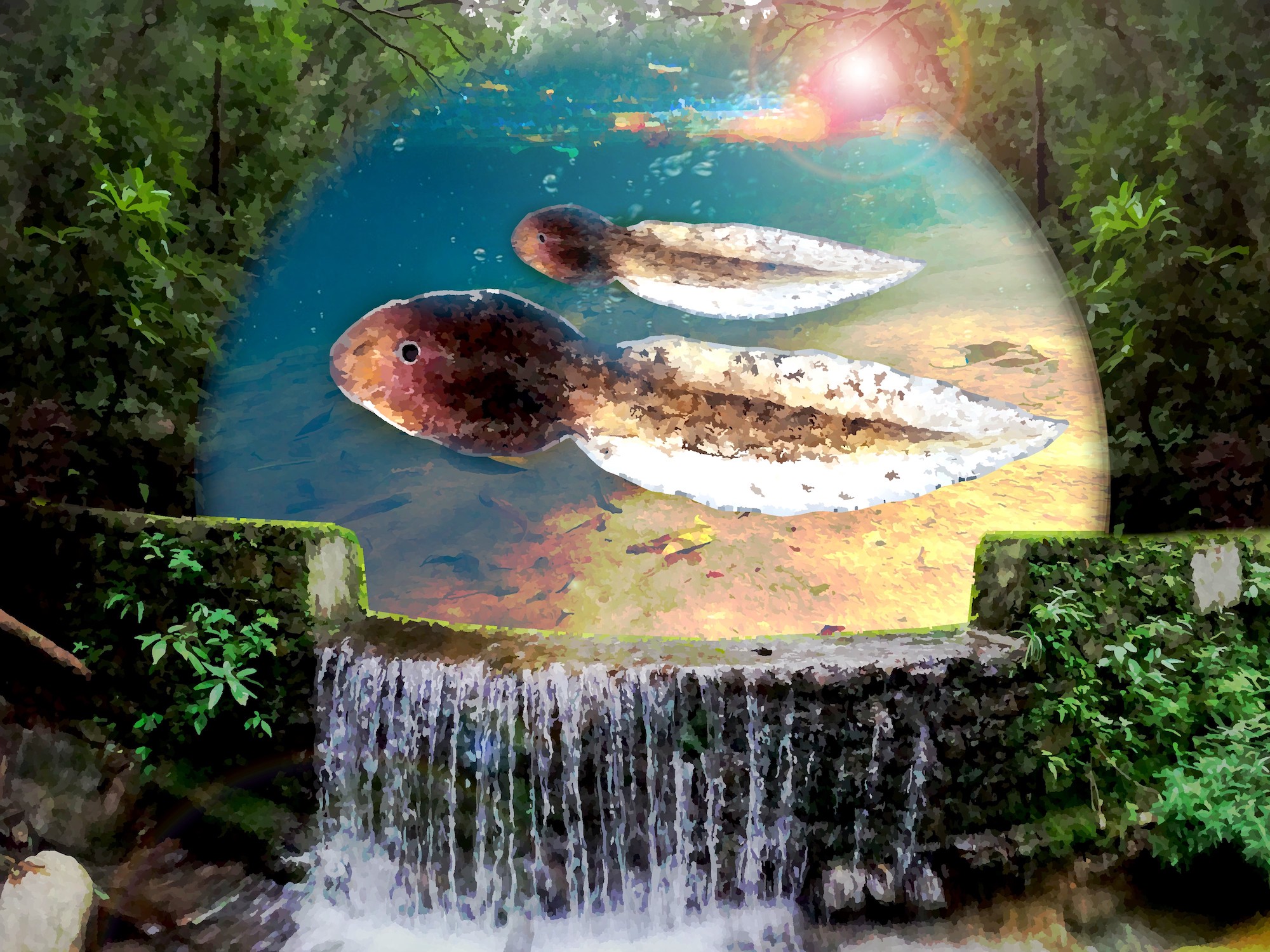Some tadpoles living in the Himalaya were recently discovered to be overwintering in cold stream water. We asked how the modification of these stream habitats by check dams installed for water extraction influences tadpole behaviour and morphology. We found tadpoles living in check dam pools are showing variations in body size and activity pattern from the ones in natural pools.
Man-made check dams are common in our streams and rivers and are known to be effective soil and water conservation structures. Of course, they do help us in retain the soil carried by torrents from the mountains and act as artificial water sources for our use. But have you ever thought about how much change they can cause in the stream, which is the habitat of many creatures? And how does this change influence underwater organisms? We set out to address this question in the cold western Himalaya, where the streams are often modified for water extraction purposes, using check dams. These streams also hold populations of organisms that are uniquely adapted for cold waters, including the overwintering tadpoles of Paa frogs (Nanorana vicina and Nanorana minica). Instead of quickly becoming adult frogs before the winter, these tadpoles skip the transition (known as ‘metamorphosis’) for at least a season and stay in the cold waters during the winter to metamorphose later in the summer. The process itself is wonderful, and asks us interesting questions like, ‘Why do they live in water during the harsh cold winter, and what are the advantages of this ‘cool’ strategy?’ Overwintering tadpoles are known from various parts of the globe, such as the USA, UK, Argentina, Japan, Austria, Taiwan, Russia and India. And scientists have attributed this strategy of temperate amphibians as a means to overcome the extreme environmental conditions in the larval form.
When we started exploring the overwintering tadpoles in the western Himalaya, check dams were frequently encountered near the stream habitats where the tadpoles existed. To add to our amazement, we found quite a large number of tadpoles in these check dam pools were larger in size compared to the natural pools. It was also easy to detect the check dam tadpoles in the daylight, whereas regular tadpoles were often very active in the nighttime. Based on these initial observations, we planned a study to see what is actually happening in these two habitats. Our major questions were: Do tadpoles show a different activity pattern in check dam pools? Are tadpoles in the check dam pools bigger than the natural pool ones? And what are the habitat features that influence the tadpole activity patterns?
To answer, we monitored selected natural and modified pools in a stream throughout the winter and post-winter period. We counted visible tadpoles in the pools during both day and night time as an indicator of the number of active tadpoles. In each pool area, we counted the tadpoles, and habitat features such as depth, water temperature, amount of leaf litter, presence of other animals, plants, and water flow were recorded. In addition to this large-scale monitoring, we also observed tadpole activities in selected pools throughout the day (24 hrs a day in 3 hrs intervals). All these observations were repeated regularly during the winter and post-winter seasons to see what changes were happening. To understand the variation in morphological features, we captured and photographed a few tadpoles from the pools and measured their body size.
Our results were quite astounding! The tadpoles in the check dam pools were larger in size compared to the natural pool population during both winter and post-winter seasons. Confirming our initial observations, tadpole activity was influenced by the check dam installations. The number of active tadpoles in a unit area was best explained by the water flow, time of the day, underwater hiding places (covers), canopy cover, water temperature, leaf litter and presence of check dam. Tadpoles were mostly active during nighttime in both pool types in winter, but this pattern changed after winter when the check dam tadpoles increased their daytime activity. Why do they do this? We do not know yet. But it is possible that heating of check dam pools in the post-winter daytime could be a reason. We have to study how the reduced water flow, low canopy and underwater cover in check dams impact the tadpoles. The changes in activity patterns and body size could also indicate changes in the predation and food availability in these habitats.
In light of the threats of climate change and an increasing number of dams in the Himalaya, the potential impact of habitat modifications on the aquatic flora and fauna needs to be understood well before humans make landscape management decisions. Effects must be considered especially when narrowly distributed and ‘vulnerable’ species like Nanorana minica with unique adaptations are inhabiting the waters of the Himalaya.
Original Article:
Jithin, V., Johnson, J. A., & Das, A. (2022). Influence of check dams on the activity pattern and morphometric traits of overwintering tadpoles in the Western Himalaya. Limnologica, 95, 125992. https://doi.org/10.1016/j.limno.2022.125992
 Evolution & Behaviour
Evolution & Behaviour



